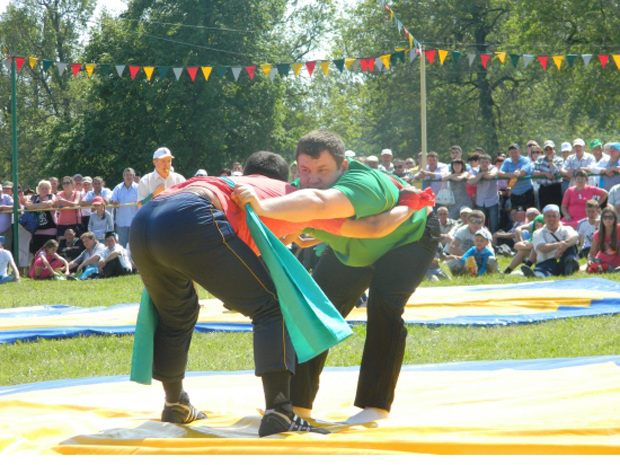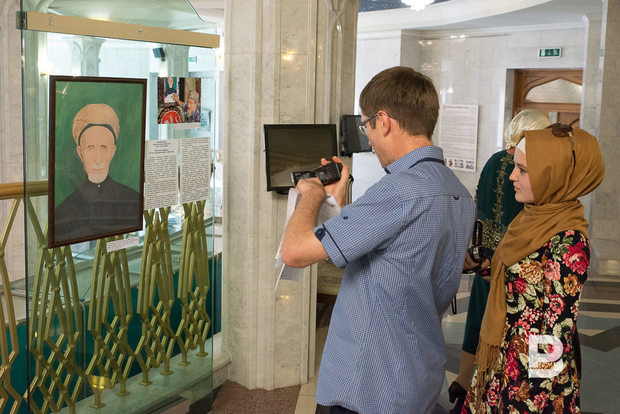Sufism in Russia: pro et contra
What does the ‘tradition’ of Russian Islam mean?
Nowadays religious and state activists are speaking about a necessity to recover traditional Islam from bully pulpits. Representatives of the Muslim Spirituality Directorate of the Republic of Tatarstan and other muftiates frequently add a Sufi element to this concept. Speaking about Taṣawwuf in Russia, a historian and columnist of Realnoe Vremya Alfrid Bustanov demonstrates curious facts when some religious clerics severely criticised this occurrence in the early 19 th century. The scientist expressed his opinion in a new column that was written for our online newspaper.
Rather dead than alive
In history, processes in society don't keep to a usual schedule at times. In Russia, the 20 th century was mainly associated with the era of the Soviet Empire from its appearance to dissolution. The Muslim community of Russia had its own internal dynamics, which not always was defined by external factors (for example, the state policy). In order to illustrate this, I would like to share my thoughts about the fate of Sufism among the Russian Muslims. To start with, my feature is not based on a fantasy but a targeted study of Sufi texts created in Russia as well as a long expedition work.
My key message is the following: in the 20 th century, the Tatars' Sufism 'died' a natural death. A turn to secularity and Islam's primary sources became the main tendency of the historical 20th century among the Russian Muslims.
I find this conversation very important because now we are witnessing a construction of images of the past, speaking to great names of Tatar Sufism and even an expansion of these images to other regions. In my opinion, it all means that the historical 20 th century has ended, and we started to actively remember the recent past.
Sufism as folklore?
It is necessary to apply to authentic descriptions in order to imagine what kind of Sufism stopped existing. First of all, an abundance of texts about ethics and behaviour in society and towards a teacher catches the eye in Tatar manuscripts of the 18 th-19th centuries. Such texts often looked like verses and were sang at meetings. That texts frequently did not have authors, but they were widely spread and actively copied. In conclusion, a focus on ethics of the religion, education of a well-mannered person was a characteristic of Tatar Sufism. Quite possibly those texts were not considered 'Sufi' but simply a part of an everyday religious activity.
Secondly, sometimes people say that Sufism in Russia was primitive, it did not have an institutional base and was close to some abstract folk beliefs and folklore. It is far from the truth, of course. Nimatulla al-Utari (died in 1817/1818) from the North-Western part of Kazan wrote an essay in Arabic about Sufis' acts and the inner state. This endeavour became a standard book in Tatar khanaqahs. It also was popular in the Ottoman Empire (several lists of this essay are kept in Istanbul only). Many students who went on a long journey looking for knowledge in the East returned to their native settlements and opened madrasas and khanaqahs – a place where pupils were brought up and Sufi services took place.
Mentor sheikh's location frequently became sacral: graves, springs and trees whose holiness was linked with Sufi mentors were situated near a village. For example, in Kurmanaevo village, which is a 'residency' of an entire dynasty of Sufi teachers, there is a spring named after the founder of this dynasty – Gobaydulla's Source. Very sheikhs' graves became a place of regular attendance and good prayer a long time ago.
Historians are interested in Sufism because sheikhs and their pupils created a wide network of contacts, which was quite often connected with a common 'ideology'. Many times these networks and their religious genealogies are called in a Christian manner 'orders' or 'fraternities'.
It is not quite right. It simplifies the idea, practices and relations between people in the past very much. It is considered that 'fraternity' of Yassawia was substituted by Naqshbandi among the Muslims in the Volga region and Siberia approximately in the 17th century and especially after the 18th century. I wrote about it too. No historian is able to explain (neither am I) what this 'castling' meant exactly. What is more, Sufis could have different rituals and severely criticise each other within the same tradition. In this term, we know little about Sufism in the Volga region except common phrases.
Music and dance amateurs
For instance, I met an enumeration of influential Sufi sheikhs of the Volga region and the name of their rituals in the middle of the 19 th century a couple of years ago in a Tatar manuscript. I was very surprised when I saw that seven in thirteen mentors preferred loud dhikr, and two of them liked a 'dance in a circle' and even Sama – a Sufi ritual that includes playing instruments and singing of religious verses. At the same time the author of this manuscript did not write what fraternity all those sheikhs belonged to. What does it mean? It means we don't have the faintest idea what Sufis meant in interiors of the Russian Empire in the 19th century. We are captivated by myths about a calm and unvaried tradition.
I should say amateurs of music in religious rituals appeared in Russia as early as the late 17 th century. Before I told about Davlat-Shakh b. Abd al-Wahhab al-Ispidjafi who wrote a short treatise in Persian that soul needs music to remember those paradise sounds and songs that it knew before coming to the mortal world in Tobolsk in 1692. This is why Muslims (not only Sufis!) must play instruments during prayers in groups. What is more, there were groups of Muslims who practised dhikr, dances and probably musical performance in the middle of the 19th century in Tobolsk Governorate. Curiously, the Persian language was the working language while discussing all these practices.
Whip comes down on Sufism
A recent finding caused surprised me even more – a short essay about new rules in the religion. A book of essays of some Yahya b. Safar al-Bulgari is kept in the Institute of Oriental Manuscripts of the Russian Academy of Sciences in Petersburg. One of them dates back to AH 1271 (1837-1838). The treatise on new rules was written in Tatar and contains an uncompromising criticism of Sufism.

The style and the character of this treatise resemble another essay of that period, which is kept in the library of the Kazan Federal University. It is dedicated to criticism of a popular festival Sabantuy. The author doesn't stint on the damnation of those people who organise this event because, from his point of view, it harms the religion and favours a distribution of 'ungodliness'.
It is characteristic that the criticism took place when Sufi practices and the prestige of Sufism as a social occurrence were at their apogee in the Tatar environment. These manuscripts are almost 100 years ahead of the debates about music among the so-called Jadids and traditionalists.
What does that mean? At least, there was not any unity in terms of allowance of certain rituals and legitimacy of Sufism in general among educated Muslims of Russia. Jadids have nothing to do here.
What was the result?
At the turn of the 19 th-20th centuries, many Sufi sheikhs in the Russian Empire decided not to impart their knowledge to anybody. Shihabetdin Marjani is an illustrative example. He had the right to teach. But he did not impart it to anybody. Sufism was criticised on newspaper pages more frequently. It lost its topicality in the urban environment.
A real Sufi sheikh Kyametdin al-Kadiri was the imam of Mardjani Mosque during the Great Patriotic War. You can see him standing in the minbar in a documental chronicle on celebration of Sacrifice Feast in 1945 (2 min 08 sec). But Sheikh al-Kadiri died in 1952 approximately. And it seems that he did not leave religious heirs. The library of another imam of the same mosque Akhmet-Zaki Safiullin, who was a direct descendant of the famous dynasty of Sufi sheikhs, did not have any sign of interest in Sufism. Descendants are not the most important thing, of course. The environment, mainly in the countryside, disappeared by the middle of the 20th century. The countryside was vitally important for Sufism as a part of everyday life. Some Sufis and rituals remained. But the Sufism that we see in written sources of the 19th century did not exist.

During archaeological digs under Brezhnev, very Sufis or their children gave Soviet scientists and textual critics from Kazan the most valuable relics of their communities – handwritten scrolls with a chain of succession down Prophet Muhammad. What motivated people to do this job? I think they did not see any perspective for Sufism in the Soviet society and preferred new forms of storage and imparting knowledge via science and secular education.
The conclusion here is simple: the history of Islam in our country is very rich and diverse. We should not look for only 'correct' or 'traditional' tendencies. Rituals, ideas and preferences have always been a hot-button issue among very Muslims. Dances with music, criticism of Sufism and silent dhikr are the sides of Islamic traditions in Russia. And these traditions are waiting for their careful explorers.